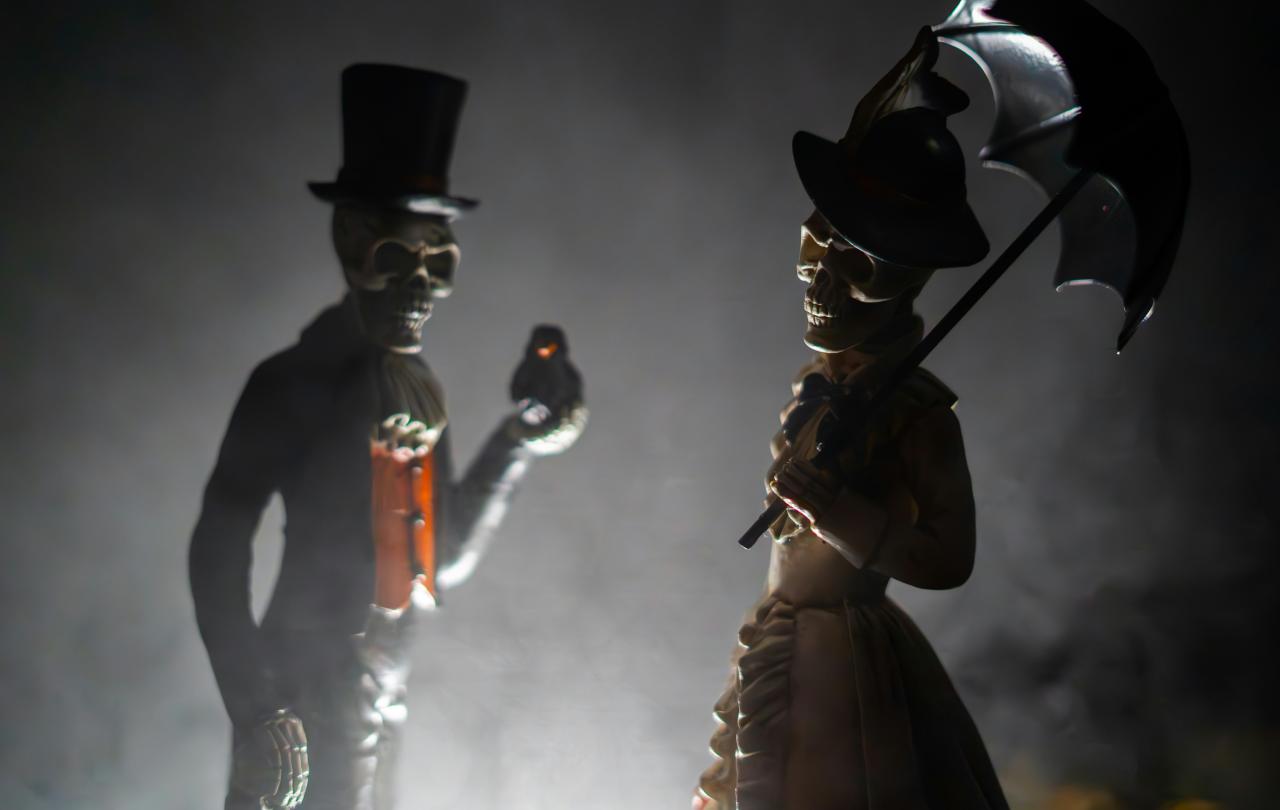Something bothers me about the approach of this years’ All Hallows’ Eve on 31 October and its accompanying night-time Halloween parties, like an irksome background unease at an encroaching darkness behind the childlike cosplay of the event itself.
God knows, there have been infinitely darker years, some of them within living memory. Two world wars, one of them containing the Holocaust and it doesn’t get darker than that. Genocides, such as Rwanda’s, and famines, from China to Russia to Ethiopia. Terrorist atrocities: Munich, Lockerbie, Madrid, 9/11.
Mass murders of children: Dunblane, Peshawar, Sandy Hook, Southport, to name a few in such a grim litany. Harder to imagine, because they’re further away culturally in either time or place, are the great plagues, conflagrations and disasters of history: The Black Death, Indian Ocean tsunami, Hiroshima.
So one wonders if it’s impertinent to feel uneasy about Halloween this year. I suspect it’s the discomfort of something bubbling under and as yet unseen, like unexploded magma or the unbearable tension of a faultline threatening to give way.
To name it is to call out a most fragile world peace – the pretence of a peace in the Middle East that cannot hold; a peace process that hasn’t even started between Russia and neighbouring Ukraine. Both presided over by an American president who at best isn’t up to securing either and, at worst, has zip interest in democratic process and is only in it for himself.
Then there’s apparently unstoppable mass migration, driven by climate change, to western economies already going to hell in policy-free handcarts. The creeping re-growth of nationalism and antisemitism, social media fuelled hatred of refugees, the collapse of trust in institutions of state in the UK’s unwritten constitution, such as the royal family, parliament, the police and the Church. Grooming gangs and trafficked sex-slaves; we’re not in the gloaming of dusk – it sometimes feels like night has fallen.
At what price, then, do we dress our children (and ourselves) as ghouls and witches and demons and make jack o’lanterns to celebrate the dark side at Halloween? It’s the question at the heart of a debate that customarily divides between those of us who say it’s just a bit of fun and we shouldn’t be spoil-sports, against others who warn censoriously about conjuring up the devil, who once abroad will play havoc with those who so foolishly summoned him.
That’s a fairly pointless argument, as the positions just get repeated and that doesn’t get us anywhere. More fruitful may be to examine what the dark side is, what it is we’re conjuring, if anything, and whether it plays any role in what we fear we may be facing, which ranges from the breakdown of the world order, to great wars and, not to put too fine a point on it, an apocalypse.
Stumbling about in the dark, we’re bound to trip over what’s called theodicy – the theological study of how a supposedly all-loving God can tolerate human evil. One of the more recent and most accessible contributions to this school comes from the US journalist and academic Brandon Ambrosino, who imagines the pursuit of theodicy not to be climbing stairs of knowledge, but the descent to a dark basement: “If the living room is where we ask how exactly God moved Trump’s head out of the way of the shooter’s bullet, the basement is where we ask if God caused the bullet to end up in a fire-fighter’s body.”
One of Amrosino’s conclusions is that “evil is not properly a thing… Evil is nothing, literally [his italics]. It is a void in the fabric of God’s creation.” This concept of evil – the dark, as any parent would comfort a child – as empty is appealing. In the dark of that basement, there is nothing there but hope.
This idea of evil as a void, or moral vacuum, is told in the story of a student (not young Albert Einstein, as widely claimed) who demurs when taught that the problem of evil proves the non-existence of God. “Does cold exist?” asks the student. Of course, replies the teacher. But cold is only the absence of energy, which creates heat. Likewise, does darkness exist? Yes, but it has no wavelength, so it is only the absence of light.
What brings the energy of light and heat, like why there is something rather than nothing, is too big a question for now. But it may go some way to addressing the darknesses listed in the first half of this column.
And perhaps it’s a thought to carry into this Halloween. Children dressed as undead phantasms, with Mum’s lipstick tracing blood trickles from their mouths, aren’t joining the dark, but filling what is empty with laughter. And, in doing so, they’re mocking it, which must offer some sort of hope for the future.





